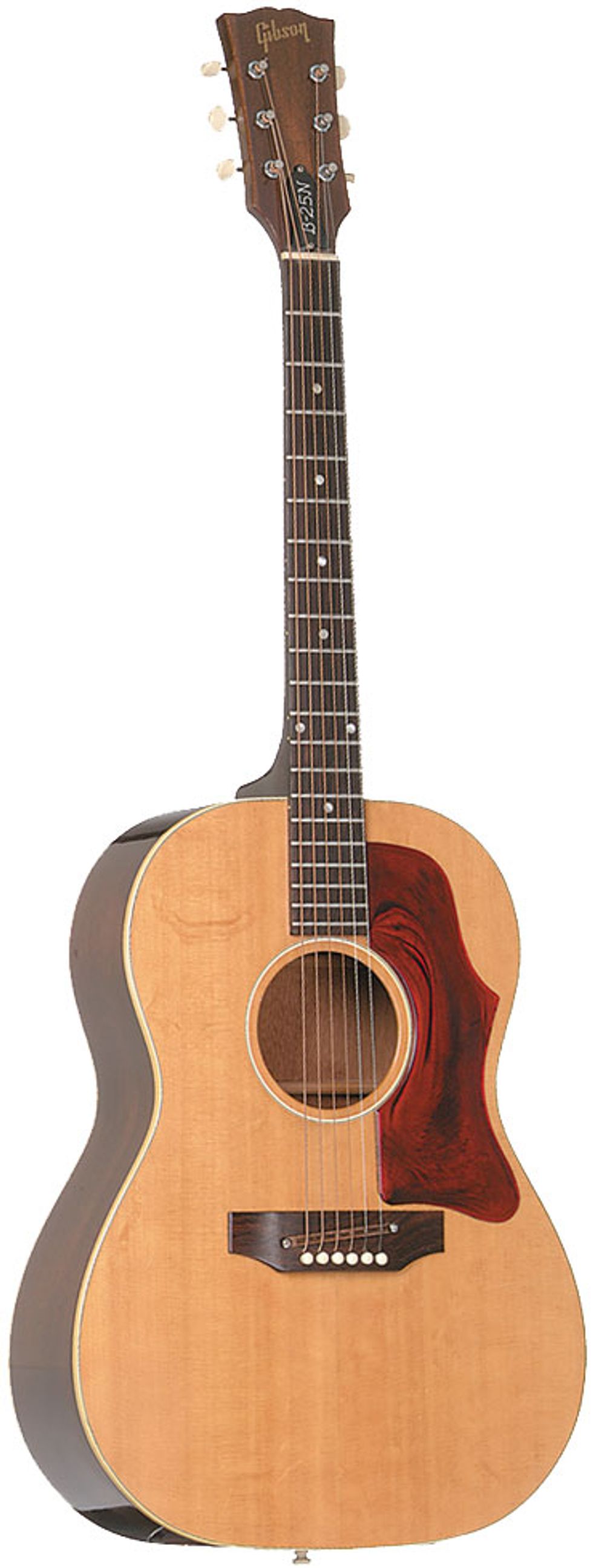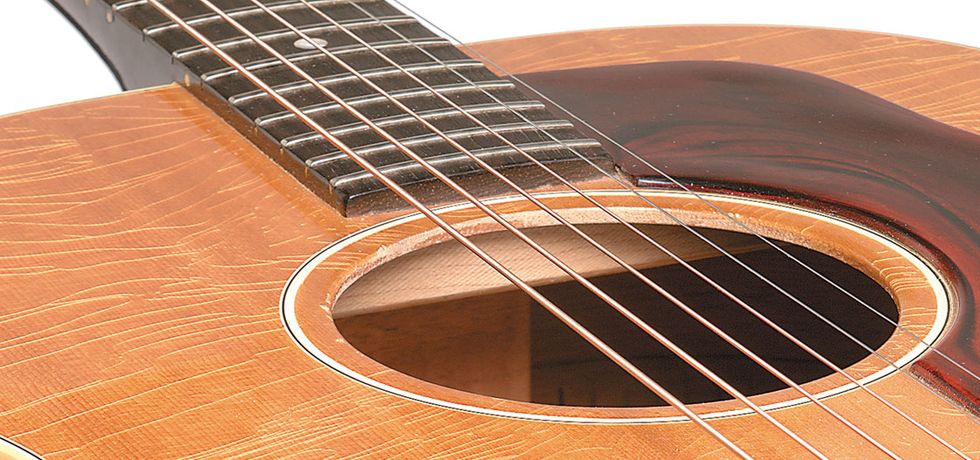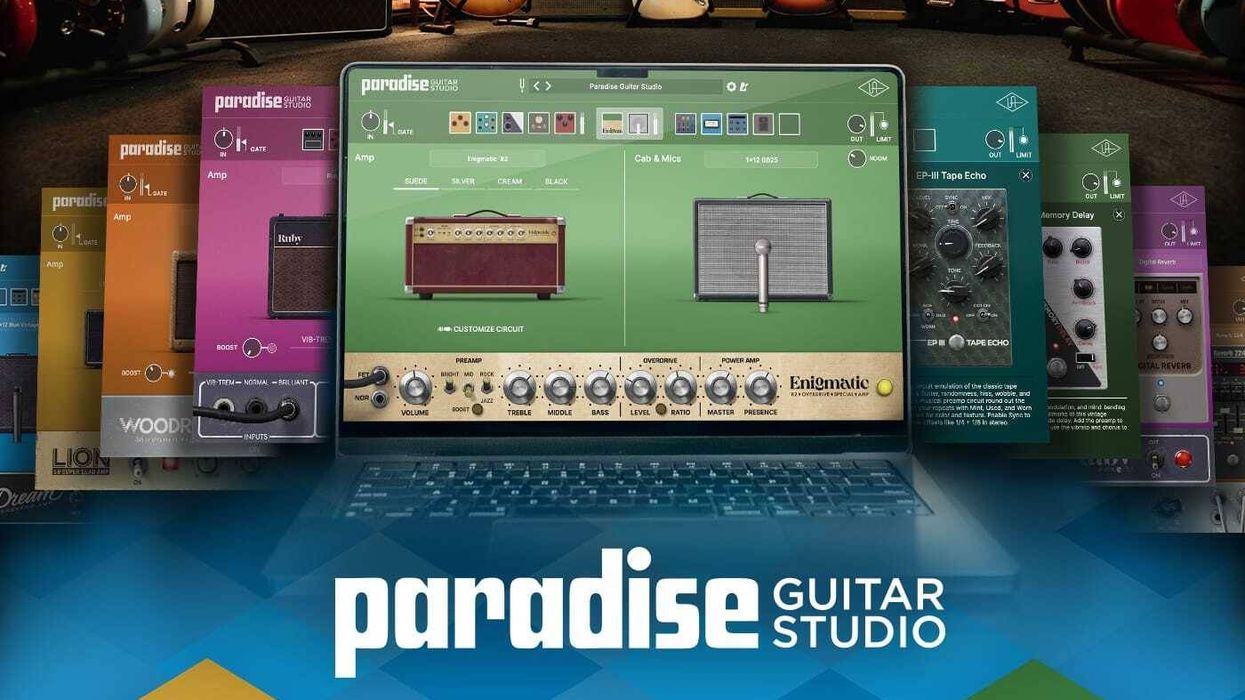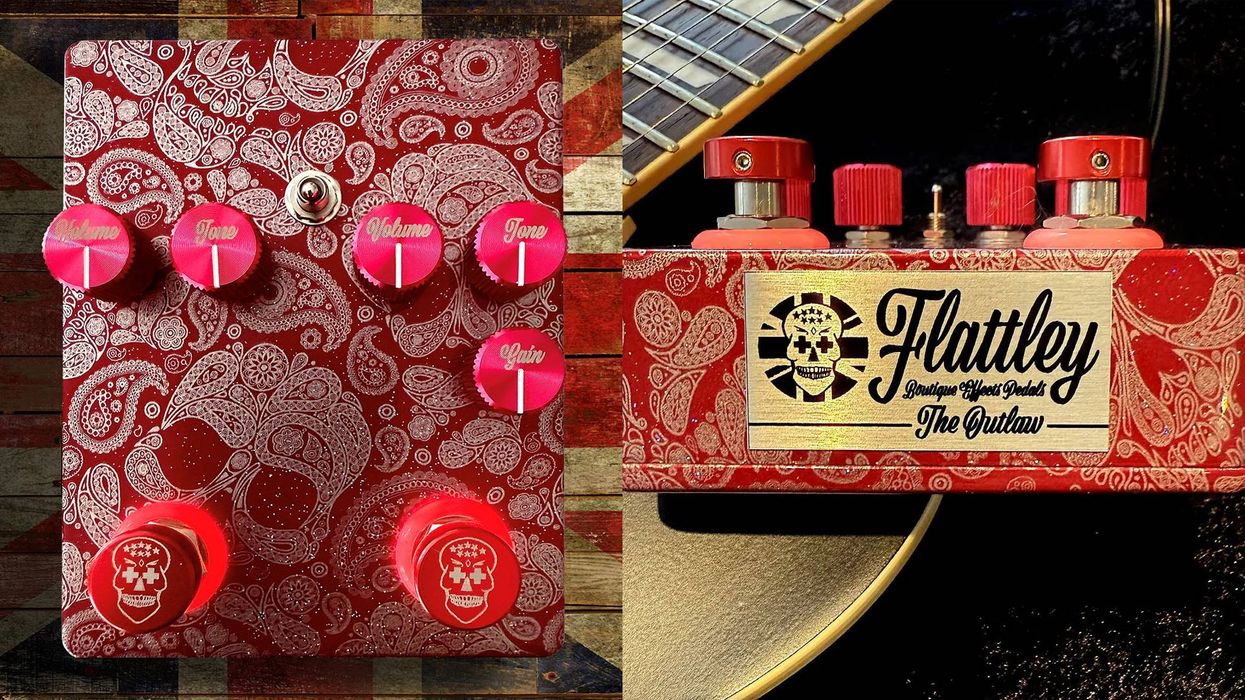Hey Zach,
This has been my favorite guitar for many years. I bought it in the mid-1970s while I was at school and have loved it ever since. I like small-body guitars and the sound is very mellow. Aside from some finish cracking on the top, I’ve managed to keep it relatively clean. It has a serial number of 899XXX and I believe it is all-original, but who knows? Can you tell me anything about the history and what it is worth today?
Thanks,
George in Lexington, Kentucky
Hey George,
Gibson’s small-body acoustics such as yours found popularity because of their size and affordability. While the company’s B series guitars first appeared in the early 1960s, Gibson’s small-body guitars go back many years and a number of notable guitarists from Robert Johnson to John Hiatt have played them.
Gibson’s first flattops were introduced in 1926 as part of their L series, and many variations were produced through the 1930s. In the early 1940s, World War II affected the availability of raw materials—arguably like no other point in time—and this included wood for building guitars. By 1942, spruce boards that were wide enough for making guitar tops were becoming increasingly scarce, so Gibson designed a guitar that was 2” narrower than their SJ or J-45 models to utilize more readily available wood. Gibson also had a new style of neck they wanted to introduce across all their lines. This new series became the LG series.
Fast-forward to 1962 when, for reasons unknown, Gibson switched many of their LG models over to the new B series. While essentially still the same, the differences between the two series ranged from cosmetic (new 3-ply binding) to important (a new plastic bridge). This screwed-on plastic bridge found on the B series remains a major discussion point amongst purists, because on many guitars the plastic bridge would crack and often cause the belly of an instrument to warp. That’s why a number of B-series guitars have replaced bridges and/or repaired tops, so one should be sure to double-check this when looking at one.
The B-25N featured a spruce top, laminated mahogany sides, a mahogany back, a rosewood fretboard with 14 frets clear of the body, dot inlays, 3-on-a-plate tuners, and the aforementioned plastic bridge. The scale length is 24 3/4", the lower bout (body width) is 14 1/4", the body length is 19 1/4", and the body depth is 4 1/2". It was available with a sunburst finish (B-25) or a natural finish like your B-25N. Other original-run B-series models included the B-15 (1967–1970), B-20 (1971–1972), B-25 3/4-scale (1962–1968), B-25 12-string (1962–1977), the B-45 12-string (1961–1979), and even a tenor version called the TG-25 (1962–1968).
Our reader’s B-25N has some obvious finish checking on its spruce top, but it’s a clean instrument overall and would likely fetch somewhere between $1,200 and $1,500.
Dating a Gibson guitar from this era isn’t always an exact science, since serialization before 1975 is often unreliable. However, according to the serialization charts, your number falls into the 1968 range, which is likely correct since the lower-belly style of bridge was introduced on the B-25 in 1968 (It had previously been an upper-belly style.) and the adjustable saddle on the model was discontinued in 1970.
As mentioned previously, the small size and affordability of the B series triggered Gibson to make a lot of them. Between 1962 and 1970, Gibson built nearly 34,000 B-25 and B-25N guitars combined, which is 4,000 more than the popular J-45 model during the same period of time. In 1965 alone, Gibson built close to 6,000 B-25 models during the height of the guitar and folk boom. All said, many did not survive through today. Fortunately for you, a bit of minor finish-checking is all this guitar shows and it’s one of the cleaner examples you might find. Your guitar is currently worth between $1,200 and $1,500, and values have been relatively stable over the past decade. With proper care and the right humidity, your Gibson should continue to be a treasure for years to come.
















